6 Fun Facts about Open Water Swimming
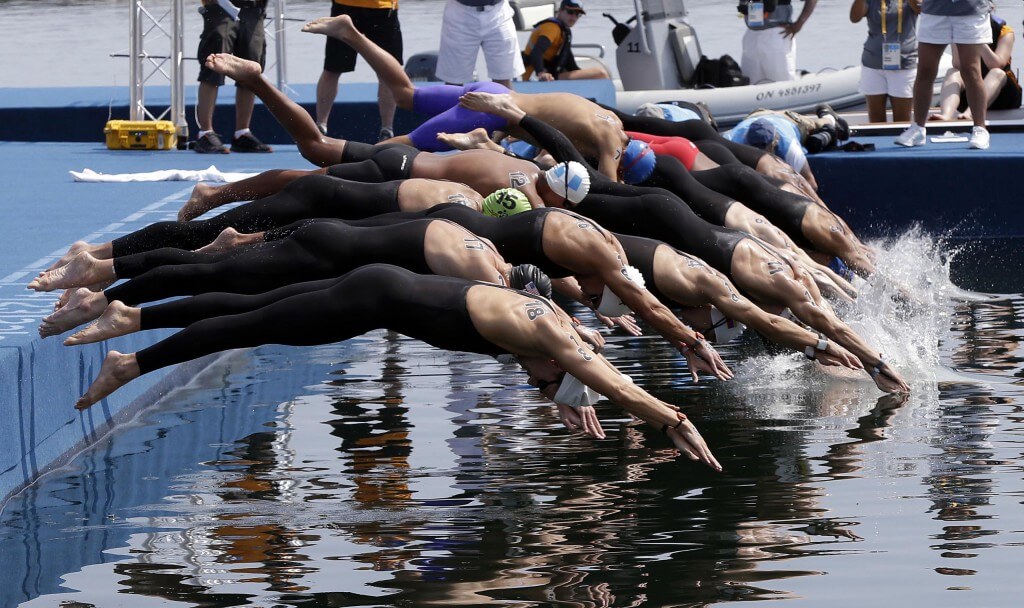
By Erin Himes, Swimming World College Intern
While wrapped up in the awe of Olympic swimming, I found myself with a lot of questions about another event: open water swimming. For a sport so similar and connected to what I do everyday, I found I knew very little about marathon swimming.
As a distance swimmer, I have found myself interested in learning more about these long distance events. Here are some basics of open water swimming that I dug up through my research.
1. There are four different course types a swim may follow.

Photo Courtesy: Dan Simonelli
Open water swims typically go parallel to shore, to or around a fixed point, around a closed course, or point to point, according to USA Swimming.
2. Open Water was not an Olympic sport until 2008.
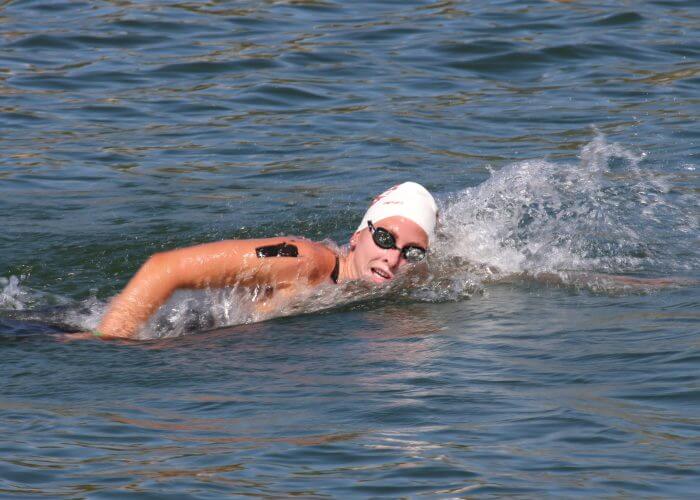
Photo Courtesy: Griffin Scott
The men’s and women’s 10k race was not added to the Olympic program until 2008 in Beijing, meaning Beijing, London, and Rio have been the only cities to host the event thus far.
3. The 10K has only been held in the ocean at the Olympics once.
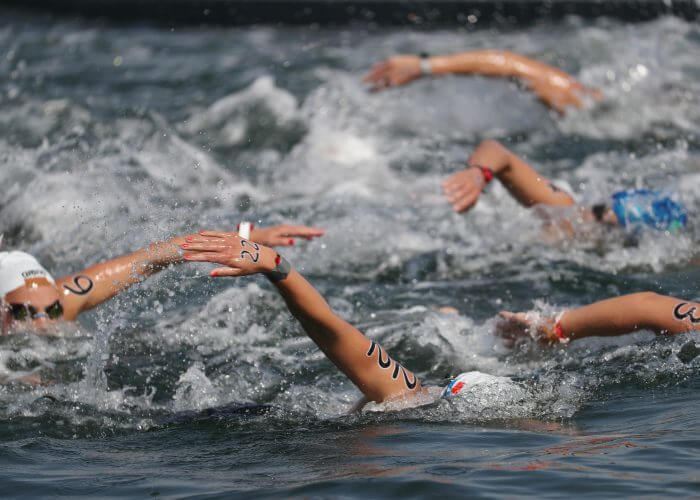
Photo Courtesy: Eric Seals-USA TODAY Sports
The 2016 Olympic Games in Rio were the first time that the open water race was held in the ocean. In London, it was held in Hyde Park and in Beijing it was held Shunyi Olympic Rowing-Canoeing Park.
4. Open water poses significant safety risks.
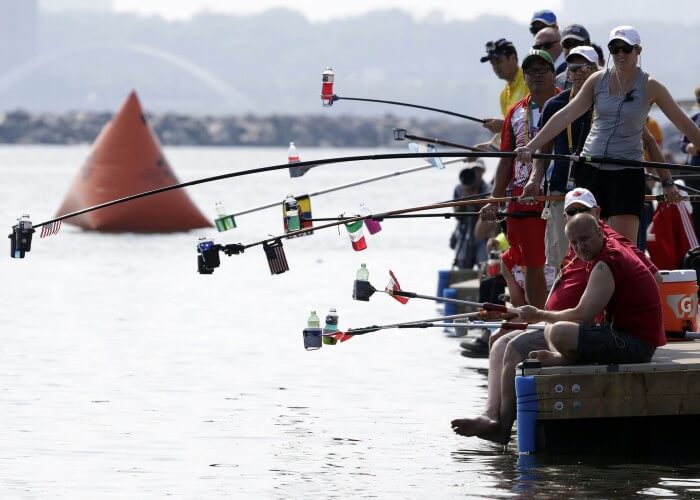
Photo Courtesy: Erich Schlegel/USA Today Sports Images
From risk of hypothermia to potential deep water rescues, open water swims obviously contain a lot more risks than pool swimming.
5. The sport gives way to a lot of fun challenge swims.
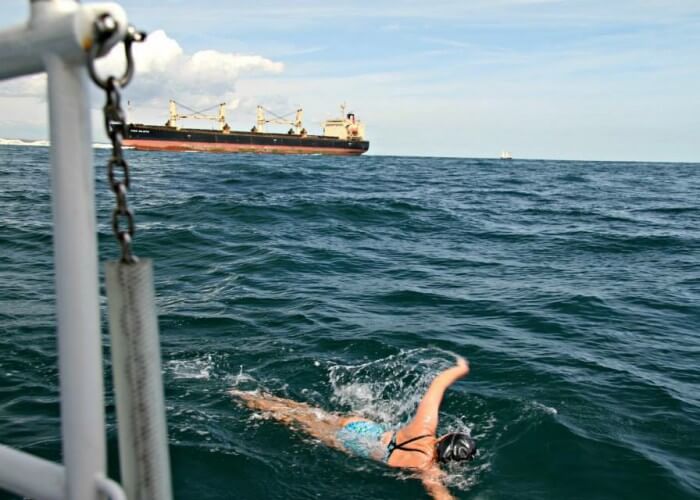
Photo Courtesy: Paige Christie
From swimming around Manhattan to escaping from Alcatraz, open water allows for a lot of creative races in tough conditions. Many races are even relays done in teams.
6. Open water holds an exclusive club of those who have earned its “Triple Crown”.
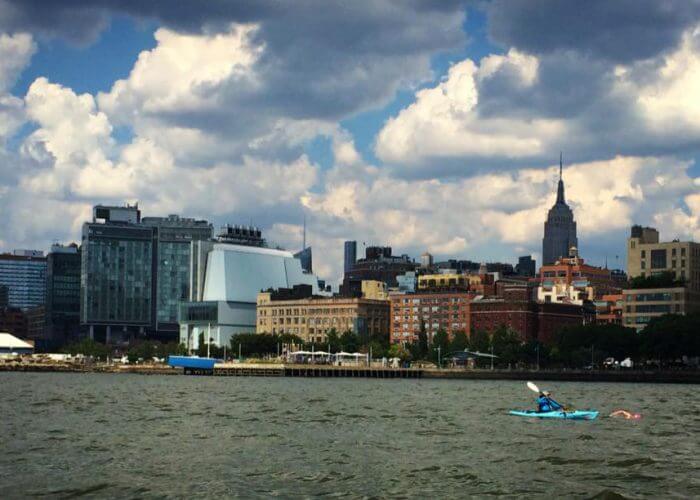
Rebecca Nevitt completes the Manhattan Island Marathon Swim. Photo Courtesy: Rebecca Nevitt.
The Triple Crown of open water swimming involves swimming 21 miles through the English Channel, 21 miles across the Catalina Channel, and 28.5 miles around Manhattan. Completion of all three swims makes you a member of this prestigious club.
For those interested in learning more, the USA Swimming page for open water can be found here.
All commentaries are the opinion of the author and do not necessarily reflect the views of Swimming World Magazine nor its staff.




In competitive national governing body-sanctioned races and FINA races, there are generally four types of courses as you accurately describe, but amateur, masters and fitness swimmer mass participation events offer a few more types of courses that can be described as follows:
1. A geometric course: a triangular, rectangular or any other multi-sided course that generally has the start and finish at the same point, but not always. The start and finish can be in the water or on land. It can also be referred to as a loop course.
2. A loop course: course around buoys in any geometric shape (e.g., triangular or rectangular), generally starting and finishing at the same point which can be in on land or in the water at a fixed position.
3. A ship-to-shore course: begins on a ship or boat or other type of marine vessel and ends on a nearby shoreline.
4. A point-to-point course (or a linear course): start and finish are at two separate points that can be on land or in the water at a fixed position.
5. An out-and-back course: course starts onshore, head out to a point away from shore in a bay, ocean, sea, lake or estuary, and then return back to the finish at the same point where the swim started.
6. A bank-to-bank course: course that starts on one bank (of a river or shore) and finishes on the opposite or other bank.
7. An island-to-island course: a point-to-point swim from one island to another.
8. An offshore course: where a majority or all of the swim is located far offshore, away from a continent or mainland.
9. A coastal course: most or all of the course is located along a coast or shoreline.
10. A transoceanic swim: an assisted stage swim or relay across one of the world’s oceans.
11. A stage course: one leg of a stage swim that consists of a number of swims held on consecutive days where the start of one leg begins at the end of the swim on the previous day.
Also, the competitive swim races at the 1896 Athens Olympics were held in Bay of Zea off the Piraeus coast in the Aegean Sea. At the 1900 Paris Olympics, the races were held in the Seine River. At the 1904 St. Louis Olympics, the races were held in a man-made pond near Skinker and Wydown Boulevards in St. Louis. At the 1906 Athens Intercalated Games, the swim races were held in Neo Phaliron Bay off the coast of Athens, Greece.
In addition to the Triple Crown of Open Water Swimming, there are also the Oceans Seven, the Ice Sevens, the Triple Break, Grand Slam of Open Water Swimming, Still Water 8, Half Century Club, and 24-Hour Club.